We are very pleased to introduce Shine (Xu) Zhang, the corresponding author of the paper ‘A simple and cost-effective approach to fabricate tunable length polymeric microneedle patches for controllable transdermal drug delivery‘. His article has been very well received and handpicked by our reviewers and handling editors as one of our May HOT articles. Shine was kind enough to tell us more about the work that went into this article and what he hopes to achieve in the future. You can find out more about the author and their article below and find more HOT articles in our online collection.
Meet the Author
 Dr. Shine (Xu) Zhang holds the Canada Research Chair (Tier II) in Healthy Environments and Communities in the Department of Chemistry and Department of Health Sciences at Cape Breton University, Pearl River Scholar Guest Chair Professor of Pharmacy at Shenzhen Polytechnic, and an active member of Beatrice Hunter Cancer Research Institute. His research aims at exploiting nanotechnology for health and environmental applications with focus on cancer diagnostics and treatment with precision nanomedicine. He is developing theranostic nanosystems for targeted combinatory therapy with his expertise in DNA aptamer technology, nanocomposite materials, polymeric microneedles, surface chemistry, surface-enhanced Raman spectroscopy, and reactive oxygen species chemistry (Fenton chemistry). Since 2015, Dr. Zhang has trained >50 postdoctoral fellows and research students, who obtained >25 prestigious scholarships and awards.
Dr. Shine (Xu) Zhang holds the Canada Research Chair (Tier II) in Healthy Environments and Communities in the Department of Chemistry and Department of Health Sciences at Cape Breton University, Pearl River Scholar Guest Chair Professor of Pharmacy at Shenzhen Polytechnic, and an active member of Beatrice Hunter Cancer Research Institute. His research aims at exploiting nanotechnology for health and environmental applications with focus on cancer diagnostics and treatment with precision nanomedicine. He is developing theranostic nanosystems for targeted combinatory therapy with his expertise in DNA aptamer technology, nanocomposite materials, polymeric microneedles, surface chemistry, surface-enhanced Raman spectroscopy, and reactive oxygen species chemistry (Fenton chemistry). Since 2015, Dr. Zhang has trained >50 postdoctoral fellows and research students, who obtained >25 prestigious scholarships and awards.
Dr. Zhang graduated with a PhD (Analytical Chemistry) from the University of Waterloo, followed with postdoctoral training at the University of Waterloo and Harvard University funded by fellowships from the Ontario Ministry of Research and Innovation and the Canadian Institutes of Health Research.
Could you briefly explain the focus of your article to the non-specialist (in one or two sentences only) and why it is of current interest?
Dissolvable polymeric microneedles are micron-sized needles for delivering drugs through the outermost layer of skin for either rapid or prolonged release. This method is painless, can be self-administered, and does not require stringent storage conditions, which increases the availability and distribution of sensitive drug molecules. We simplified the microneedle manufacturing process by modifying widely available tattoo needle cartridges as master templates, reducing manufacturing time and cost and enabling researchers to develop microneedles of various formulations for proof-of-concept studies.
How big an impact could your results potentially have?
Microneedles can be manufactured in many ways that are generally costly, and most moulding techniques only generate a single array morphology. We demonstrated that simple and inexpensive tattoo cartridges can be modified for manufacturing microneedles of desired length by applying a simple silicone spacer. This simplifies the procedure and enables low cost construction of these devices, which facilitates research and development in this field.
Could you explain the motivation behind this study?
Transdermal drug delivery is an attractive alternative to traditional subcutaneous, intramuscular, and intravenous injection; however, the outer layer skin is an effective barrier towards macromolecular and hydrophilic drugs. Microneedles penetrate the skin barrier, stabilize embedded drug molecules toward thermal and hydrolytic degradation, and facilitate distribution in remote and resource limited areas. They reduce burdens on healthcare systems and enable effective drug distribution to remote communities.
In your opinion, what are the key design considerations for your study?
The key design considerations in this work were maintaining the morphological stability of the microneedles to ensure they remained rigid enough to penetrate the skin while also dissolving quickly within the skin tissue and delivering its drug cargo.
Which part of the work towards this paper proved to be most challenging?
High uniformity in morphology and geometry is required to ensure accurate and precise drug delivery. This was a challenge when preparing microneedles from different master templates and batches, including varying microneedle length using the same master template.
What aspect of your work are you most excited about at the moment?
The most exciting aspect of this work is its general applicability. Many modifications can be made, including incorporation of photothermal nanomaterials to enable precisely controlled drug release through controlled dissolution of the structural polymers.
What is the next step? What work is planned?
Our goal is the large-scale microneedle fabrication for the delivery of active biologics, e.g., proteins, vaccines, and siRNA. This technology may facilitate disease treatment and prevention, especially in areas with limited resources and healthcare availability.
A simple and cost-effective approach to fabricate tunable length polymeric microneedle patches for controllable transdermal drug delivery
Yongli Chen, Yiwen Xian, Andrew J. Carrier, Brian Youden, Mark Servos, Shufen Cui, Tiangang Luan, Sujing Lin and Xu Zhang
RSC Adv., 2020,10, 15541-15546
DOI: 10.1039/D0RA01382J, Paper
 Submit to RSC Advances today! Check out our author guidelines for information on our article types or find out more about the advantages of publishing in a Royal Society of Chemistry journal.
Submit to RSC Advances today! Check out our author guidelines for information on our article types or find out more about the advantages of publishing in a Royal Society of Chemistry journal.
Keep up to date with our latest HOT articles, Reviews, Collections & more by following us on Twitter. You can also keep informed by signing up to our E-Alerts.


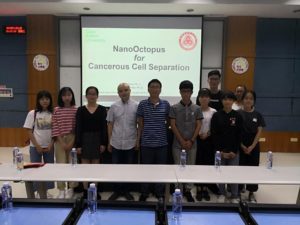
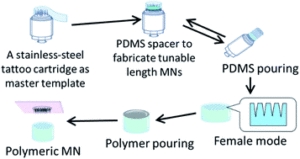









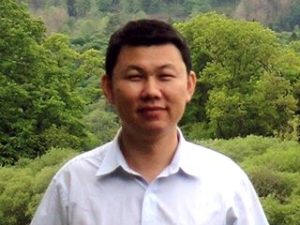
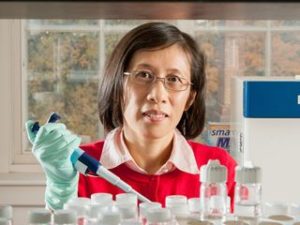


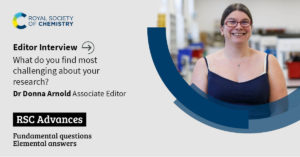


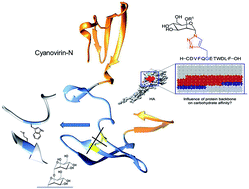


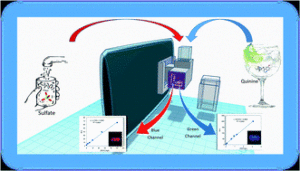

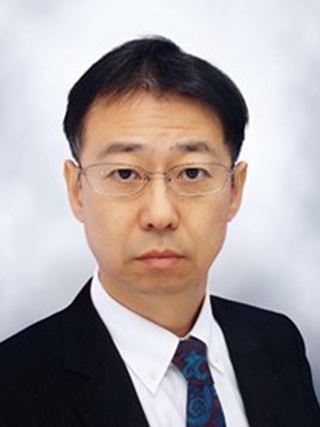 Norio Shibata has been a Professor at the Nagoya Institute of Technology since 2008. He received a Ph.D. (1993) in pharmaceutical sciences from Osaka University under the direction of Professor Yasuyuki Kita. He worked at Dyson Perrins Laboratory (Professor Sir Jack. E. Baldwin), Oxford University (JSPS fellow, 1994−1996), Sagami Chemical Research Institute (Dr. Shiro Terashima, 1996), after which he was a lecturer at Toyama Medical & Pharmaceutical University (1997−2003), and an associate professor at the Nagoya Institute of Technology (2003−2008). He also acted as a visiting professor at the University of Rouen (2008, 2012) and Zhejiang Normal University (2017−), an academic visitor at the University of Oxford (2017, 2018) and University of Valencia (2017, 2019), a senior technical consultant at the National Engineering Technology Center of Fluoro Materials, Juhua Group Corporation (2017−).
Norio Shibata has been a Professor at the Nagoya Institute of Technology since 2008. He received a Ph.D. (1993) in pharmaceutical sciences from Osaka University under the direction of Professor Yasuyuki Kita. He worked at Dyson Perrins Laboratory (Professor Sir Jack. E. Baldwin), Oxford University (JSPS fellow, 1994−1996), Sagami Chemical Research Institute (Dr. Shiro Terashima, 1996), after which he was a lecturer at Toyama Medical & Pharmaceutical University (1997−2003), and an associate professor at the Nagoya Institute of Technology (2003−2008). He also acted as a visiting professor at the University of Rouen (2008, 2012) and Zhejiang Normal University (2017−), an academic visitor at the University of Oxford (2017, 2018) and University of Valencia (2017, 2019), a senior technical consultant at the National Engineering Technology Center of Fluoro Materials, Juhua Group Corporation (2017−).